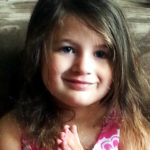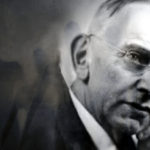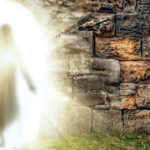REINCARNATION
The concept of reincarnation, that of an individual dying and then being reborn into another body, has existed in various religions for at least 3,000 years. The belief most likely arose independently in different areas, and this was followed by periods in which the concept spread to other regions. It has now spread to the point that there are probably more people alive who believe in reincarnation than do not. Even in cultures such as the United States and Western Europe that do not have a predominant belief in reincarnation, 20 to 30 percent of the population holds the belief. While the general concept is present in a number of religions and people groups, there are also significant differences between the various belief systems.
HINDUISM
In Hinduism, it is believed that an enduring soul survives after death, spends a variable amount of time in another realm, and then becomes associated with a new body. Rebirth into the opposite sex or, under certain circumstances, into a nonhuman animal form is considered possible. Hinduism includes the concept of karma, the idea that the conditions into which one is born are determined by one’s conduct in various previous lives. Life on Earth is considered undesirable, and an individual may engage in religious practices in each life until eventually earning release from the cycle of rebirth, losing individuality, and achieving union with the infinite spirit ( nirvana ).
BUDDHISM
Buddhism shares some concepts with Hinduism but also has some significant differences. In particular, Theravada Buddhism, found in the southern parts of Asia, emphasizes in the doctrine of anatta, or no soul, which states there is no enduring entity that persists from one life to the next. At the death of one personality, a new one comes into being, much as the flame of a dying candle can serve to light the flame of another. When an individual dies, a new personality is born, generally first into a nonterrestrial plane of existence followed later by a new terrestrial personality. As in Hinduism, karma determines the circumstances of subsequent lives, so there is continuity between personalities but not persistence of identity. For this reason, Theravada Buddhists prefer the term rebirth to reincarnation.
In Buddhism, the law of karma is viewed as naturalistic, akin to the laws of physics. Thus, circumstances of rebirths are not seen as rewards or punishments handed out by a controlling God but are simply the natural results of various good deeds and misdeeds. The cycle of rebirths has involved innumerable lives over many eons, including ones in both sexes, in nonhuman animals, and in other realms. It inevitably involves suffering and continues until all cravings are lost and nirvana is achieved.
SHIITE MUSLIMS
A number of groups of Shiite Muslims in western Asia, such as the Druses of Lebanon and Syria and the Alevis in Turkey, have a belief in reincarnation that does not include the concept of karma. Instead, they believe that God assigns souls to a series of lives in different circumstances that are generally disconnected from one another until the ultimate Judgment Day, when God sends them to heaven or hell based on the moral quality of their actions during all the various lives. The Druses also believe that rebirth occurs immediately after death with no discarnate existence possible. While the Alevis believe that rebirth in nonhuman animals can occur, the Druses do not, and, in fact, they believe that they can only be reborn as other Druses. Neither group believes that they can be reborn as members of the opposite sex.
JUDAISM AND CHRISTIANITY
While reincarnation is not a belief in mainstream Judaism and Christianity, it has been part of the belief system of some of their groups. In Judaism, the Kabbalah, the body of teaching based on an esoteric interpretation of Hebrew scriptures, includes reincarnation, and Hasidic Jews include it in their belief system. In Christianity, some groups of early Christians, particularly the Gnostic Christians, believed in reincarnation, and some Christians in southern Europe believed in it until the Council of Constantinople in 553 C.E. Some Christians find support for reincarnation in the passage in the New Testament Book of Matthew in which Jesus seems to say that John the Baptist is the prophet Elijah returned.
ANCIENT GREECE
The Greek philosophers wrote extensively about the concept of reincarnation, beginning with the legendary Orpheus and with Pythagoras. After Socrates, Plato, whose ideas about reincarnation became particularly influential, taught that one’s soul is immortal, preexists before birth, and is reborn many times. Each soul chooses its next life, guided by its experiences in the previous lives. Aristotle initially accepted the ideas of his teacher Plato, but later largely rejected the concepts of reincarnation and immortality, becoming the father of materialism in Western thought.
WEST AFRICA
The concept of reincarnation is common among the various peoples of West Africa. In general, unlike Hindus and Buddhists, they believe that rebirth is desirable and that life on Earth is preferable to that of the discarnate, limbo state. They believe that individuals are generally reborn into the same family and that their souls may split into several rebirths simultaneously. Some groups believe in the possibility of rebirth into nonhuman animals while others do not. Many have the concept of “repeater children,” in which one soul will harass a family by repeatedly dying as an infant or young child only to be reborn into the family again.
NATIVE AMERICANS AND INUIT
The Inuit and many other Native American tribes, particularly those in the most northern and northwestern parts of North America, also believe in reincarnation. The details of the beliefs have varied greatly across different groups. Many do not necessarily expect all individuals to be reborn, but they instead focus on those who have had premature deaths, such as deceased children being reborn into the same family or dead warriors being reborn with birthmarks corresponding to their wounds. Some have believed in human to nonhuman rebirth and in cross-sex reincarnation. Many of them also believe that an individual may be reborn simultaneously as several different people.
EVIDENCE FOR REINCARNATION
In the twentieth century, researchers began exploring possible evidence for reincarnation. In 1961 Ian Stevenson, then the chairman of the Department of Psychiatry at the University of Virginia, began investigating cases of young children who claimed to remember previous lives. In a typical case, a child at the age of two or three would begin to speak spontaneously about another life. Some children described the life of a stranger while others talked about a deceased individual known to the child’s family. In the cases involving a stranger, the child would often persist with the claims until the family eventually made efforts to locate the family of the previous personality; that is, the person whose life the child was describing. In many cases, their efforts were successful, and the child would then meet the family. At these meetings, the child would often be said to identify members of the previous family as well as items belonging to the deceased individual.
Stevenson discovered that such cases were fairly easy to find in many parts of the world, particularly in Asia, and he eventually relinquished his position as departmental chairman to pursue the research full time. Since that time, he and other researchers have collected over 2,500 cases of children claiming to remember previous lives. As of 2002, such cases were still being collected regularly. While they each have individual variations, they generally share certain characteristics.
Location of cases. Cases are most easily found in cultures with a belief in reincarnation, and the most common areas for cases include India, Sri Lanka, Turkey, Lebanon, Thailand, Myanmar, West Africa, and among the tribal groups of northwest North America. Cases have been found, however, wherever they have been sought, and they include well over 100 nontribal American ones.
Types of lives described. The children who spontaneously report past lives generally describe a life as someone in their own culture. Even the exceptions usually show some geographical connection, such as Burmese children who describe the lives of Japanese soldiers killed in Burma during World War II, and cases of children describing lives in faraway countries are very rare.
In addition, the lives described are almost always ordinary ones, as the children describe typical family life and routine occupations. Claims to have been a famous person or royalty are essentially nonexistent in the spontaneous child cases. The children also tend to describe recent lives; the average interval between the death of the previous personality and the birth of the child is around fifteen months.
One exceptional part of the lives described is the percentage of violent deaths reported. Stevenson found that approximately 60 percent of the children who talk about the mode of death of the previous personality describe a violent one. Compared to cases with a nonviolent mode of death, the cases that involve violence have a shorter interval on average between the death of the previous personality and the birth of the subject.
Age and manner of speaking. The children studied almost always start talking about the previous lives between the ages of two and five years. Some with unusual verbal skills may make statements earlier, and some make gestures earlier that are not understood until they develop the verbal skills to make statements that connect the gestures to a previous life. They almost always stop talking about the previous life between the ages of five and eight, which is generally the age when children branch out from the family and begin school, and also the age when children tend to lose early childhood memories.
Many of the children show extreme seriousness or great emotion when they talk about the previous life. They may cry as they talk about missing their previous family or show great anger in describing their killer. The children in the stronger cases, such as ones with more verified statements about the previous life, tend to show more emotion in describing the previous life than those in the weaker cases. Some children may talk about the previous life with great emotion one minute and then go off to play the next, and some parents say that their child has to be in the “right” state of mind to discuss the previous life. In U.S. cases, this is often during relaxed times such as during a car ride or after a bath. Other children, however, appear to have access to the memories at all times.
Themes of the past life statements. The children in the studies who talk about previous lives do not tend to make statements indicating great wisdom. Instead, they generally talk about events from the end of the previous life; almost three-quarters of the subjects describe the mode of death of the previous personality. They are also much more likely to talk about people from the end of that life than about people from earlier in it. Thus, a child who describes the life of an adult tends to talk about a spouse or children rather than parents.
Few subjects talk about any time between lives. Of those that do, some describe staying near their homes or the site of their deaths, and they may describe seeing their funerals or other events that occurred after their deaths. Others report going to a discarnate realm, at times describing meetings with other beings such as sages or guides.
Birthmarks and birth defects. In about 35 percent of the cases, the child bears a birthmark or birth defect that matches a wound of the previous personality, usually the fatal wound. The birthmarks tend to be unusual ones, often being puckered scarlike areas, and some of them are said to have oozed or bled for some time after the child was born. The birth defects are often ones that are extremely rare. In the late 1990s Stevenson published a series of over 200 such cases in which he documented the correspondence of the marks to wounds on the previous personality, using postmortem reports whenever possible. Examples include cases in which children had birthmarks that matched the bullet entrance and exit wounds on the previous personality and others with multiple marks matching the wounds from the shotgun blasts that killed the previous individuals.
Behaviors related to the previous life. Many of the children in these studies show behaviors that suggest a connection to the previous individual. They often show emotions toward the various members of the previous family that are appropriate: demurring to a husband, being bossy to a younger sibling (who is now, in fact, much older than the subject), and so forth.
Many of the children show phobias related to the mode of death; 50 percent of those describing a violent death show a phobia of the instrument of that death. At times, the phobia will be present long before the child talks about the previous life; for example, a baby may show an intense fear of water, and that child later reports a memory of having drowned in the previous life.
Some children show likes and dislikes that match those of the previous personality. For example, Burmese children who describe lives as Japanese soldiers may complain about the spicy Burmese food while requesting raw fish to eat.
Many of the children show connections to the previous life in their play. For example, some act out the occupation of the previous personality. At times, this can reach compulsive proportions so that, for instance, the child misses school because of the insistence on continuing with this play. Others repetitively act out the death that they describe in what appears to be posttraumatic play. Many of the children who report previous lives as members of the opposite sex show behaviors appropriate to that sex. They may dress, play, and think of themselves as members of the opposite sex, and this behavior can be of such severity to warrant a diagnosis of gender identity disorder. Most of the children, however, show a normal course of development that is indistinguishable from their peers.
METHODS AND INTERPRETATIONS
In the vast majority of cases, the investigators do not get to a case until after the subject’s family and the previous personality’s family have met, often not until years after. This leads to the need to interview as many firsthand witnesses as possible. These include, of course, the subject, but he or she may not still be reporting memories of the previous life by the time of the interview. The child’s parents are always important witnesses, since the young child has often told more to them than to others. In addition, other family members and family friends can be important witnesses. After they have been interviewed and the information recorded, the previous personality’s family is interviewed. Those family members can confirm both the details of the previous personality’s life that are relevant as well as any recognitions or information that the child demonstrated when the two families met. In all instances, firsthand knowledge rather than hearsay is sought. Interviews are conducted with the use of an interpreter in countries where one is needed.
Repeat interviews are often conducted, both to obtain additional details that were missed during the first ones and to determine whether the reports remain consistent. In addition, other evidence is gathered when relevant. For example, postmortem reports may be obtained, both to confirm the details that the child gave about the death as well as to confirm, when applicable, that the child’s birth-marks do match wounds on the deceased. In the cases in which the previous personality was unknown to the subject’s family, investigators also attempt to learn whether the child or the family may have had a connection to the previous personality or possible access to information about that life that is not immediately apparent.
There are also times when the researchers find a case in which the previous personality has not yet been identified. The information from the subject and his or her family is recorded, and it is then used in an effort to identify the deceased individual whose life the child is describing.
There are several possible ways in which these cases could arise through normal means. One is fraud, but this is quite unlikely for the vast majority of cases, given the number of witnesses often involved, the amount of effort that would be necessary to perpetrate such a fraud, and the lack of motive to do so.
Another possibility is that the children have learned about the deceased person through normal means but then forgotten where they acquired the information. This would not explain the birth-marks that match the wounds of the deceased. Also arguing against this interpretation are the lack of opportunity in many cases for the child to have heard anything at all about the previous personality, the mention by some children of information known to only a select few intimates of the previous personality, the child’s strong sense of identification with the previous personality, and other behavioral features that the children often show. In addition, the stronger cases, such as ones with more verified statements about the previous life, tend to involve greater distance between the homes of the child and the previous personality than the weaker ones.
A third possibility is that after the families of the subject and the previous personality have met, the family members credit the subject with having had more knowledge of the prior life than he or she actually had. According to this interpretation, the evidence for a connection with a previous life is not valid due to faulty memory on the part of the participants. While this possibility would not explain the birthmark cases or the ones in which a written record was made of the child’s statements before the previous personality was identified, it could explain many others. Two studies, however, argue against this hypothesis. In 2000 Stevenson and Jürgen Keil conducted a study in which Keil reinvestigated cases twenty years after Stevenson’s initial investigation. They found that the cases had not become stronger in the participants’ minds over the years, and, in fact, some had become somewhat weaker as witnesses recalled less specific details of what the child had said. In the other study, Schouten and Stevenson in 1998 compared cases from India and Sri Lanka in which written records had been made before the two families met with other thoroughly investigated cases without such written records. The two groups had the same percentage of correct statements, and the overall number of statements was actually lower in the cases without a written record made beforehand.
In addition to normal means, a possible way to explain the cases would be that the children gain knowledge of the previous personality through extrasensory perception. This seems unlikely because most of these children show no other extrasensory ability and because the cases involve multiple features—birthmarks, identification with the previous personality, longing for the previous family, phobias, repetitive play—other than the knowledge of the previous life.
Another possible explanation is reincarnation. These cases, taken at face value, suggest that memories, emotions, a sense of identification, and even physical features can carry over from one life to the next. This does not necessarily mean that these characteristics carry over for other individuals who do not remember previous lives, or that other individuals have even had previous lives. The cases do, however, provide evidence that should be considered in any evaluation of the concept of reincarnation.
Bibliography
Harvey, Peter. An Introduction to Buddhism: Teachings, History and Practices. Cambridge: Cambridge University Press, 1990.
Head, Joseph, and Sylvia L. Cranston, eds. Reincarnation: The Phoenix Fire Mystery. New York: Warner Books, 1979.
Mills, Antonia, and Richard Slobodin, eds. Amerindian Rebirth: Reincarnation Belief among North American Indians and Inuit. Toronto: University of Toronto Press, 1994.
Schouten, Sybo A., and Ian Stevenson. “Does the Socio-Psychological Hypothesis Explain Cases of the Reincarnation Type?” Journal of Nervous and Mental Disease 186 (1998):504–506.
Stevenson, Ian. Children Who Remember Previous Lives: A Question of Reincarnation, revised edition. Jefferson, NC: McFarland and Company, 2001.
Stevenson, Ian. Reincarnation and Biology: A Contribution to the Etiology of Birthmarks and Birth Defects. Westport, CT: Praeger, 1997.
Stevenson, Ian. “The Belief in Reincarnation among the Igbo of Nigeria.” Journal of Asian and African Studies 20 (1985):13–30.
Stevenson, Ian. Cases of the Reincarnation Type, Vol. 4: Twelve Cases in Thailand and Burma. Charlottesville: University Press of Virginia, 1983.
Stevenson, Ian. Cases of the Reincarnation Type, Vol 3: Twelve Cases in Lebanon and Turkey. Charlottesville: University Press of Virginia, 1980.
Stevenson, Ian. Cases of the Reincarnation Type, Vol 2: Ten Cases in Sri Lanka. Charlottesville: University Press of Virginia, 1977.
Stevenson, Ian. Cases of the Reincarnation Type, Vol 1: Ten Cases in India. Charlottesville: University Press of Virginia, 1975.
Stevenson, Ian, and Jürgen Keil. “The Stability of Assessments of Paranormal Connections in Reincarnation-Type Cases.” Journal of Scientific Exploration 14 (2000):365–382.
Tucker, Jim B. “A Scale to Measure the Strength of Children’s Claims of Previous Lives: Methodology and Initial Findings.” Journal of Scientific Exploration 14 (2000):571–581.








